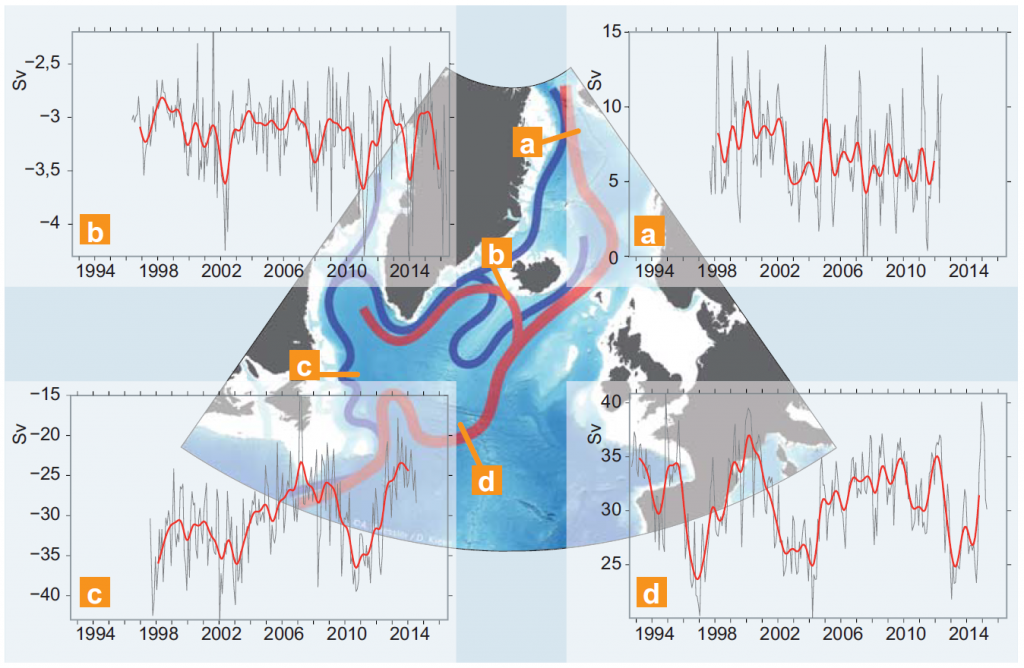The Atlantic Meridional Overturning Circulation (AMOC), often referred simply as the Gulf Stream, is a component of the global thermohaline circulation and significantly influences the climate in the Atlantic region and across Europe. Observations of the AMOC cover only a period of the recent 20 years, and they have shown that the AMOC has a surprisingly large range of natural variability. Therefore, studies with realistic climate models are an important method to broaden our understanding of the processes in the North Atlantic, and to separate the natural variability from the changes due to anthropogenic global warming. This project focuses on the processes and mechanisms associated with the variability of the AMOC that have a significant impact on the climate in Europe.
Objectives
We want to use the data from the climate models and the available observations to develop a consistent picture that answers
- which processes on which timescales dominate the variability of the AMOC,
- what are the contributions of internal (e.g., large-scale fluctuations in the ocean and the atmosphere) and external factors (change in global CO2 content) to the variability, and
- what are the impacts of the AMOC variability on the climate on different time scales.
In addition, answering these questions allows us to estimate the predictability of overturning circulation, and to separate a developing anthropogenic AMOC signal from the natural AMOC variability and thus to detect it at an early stage.
Methods
- High resolution simulations of the natural AMOC variability over a period of 1000 years in a coupled experiment of the Kiel Climate Model (KCM)
- Performing model experiments with idealized scenarios for the 21st century (CO2 increase and freshwater input, respectively) with the same model configuration
- Combining our results and the results of the experiments of the Coupled Model Intercomparison Project phase 5 (CMIP5), we investigate the temporal and spatial AMOC variability and ensuing impacts

PI
Mojib Latif, Geomar, Kiel
Team
Claus Böning, Geomar, Kiel
Richard Greatbatch, Geomar, Kiel
Arne Biastoch, Geomar, Kiel
Johannes Karstensen, Geomar, Kiel
Thomas Martin, Geomar, Kiel
Wonsun Park, Geomar, Kiel
Annika Reintges, Geomar, Kiel
